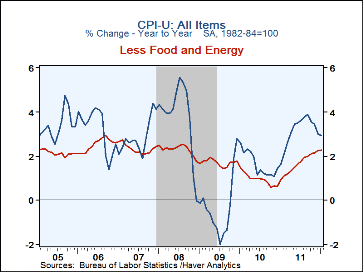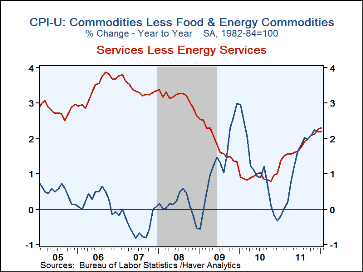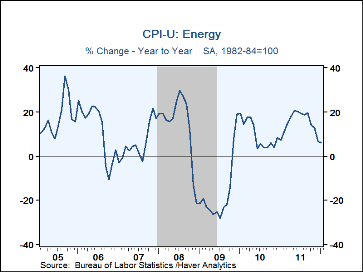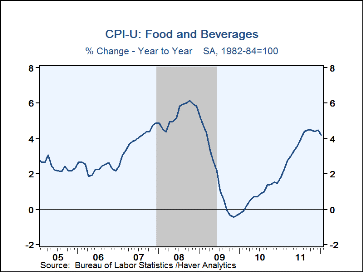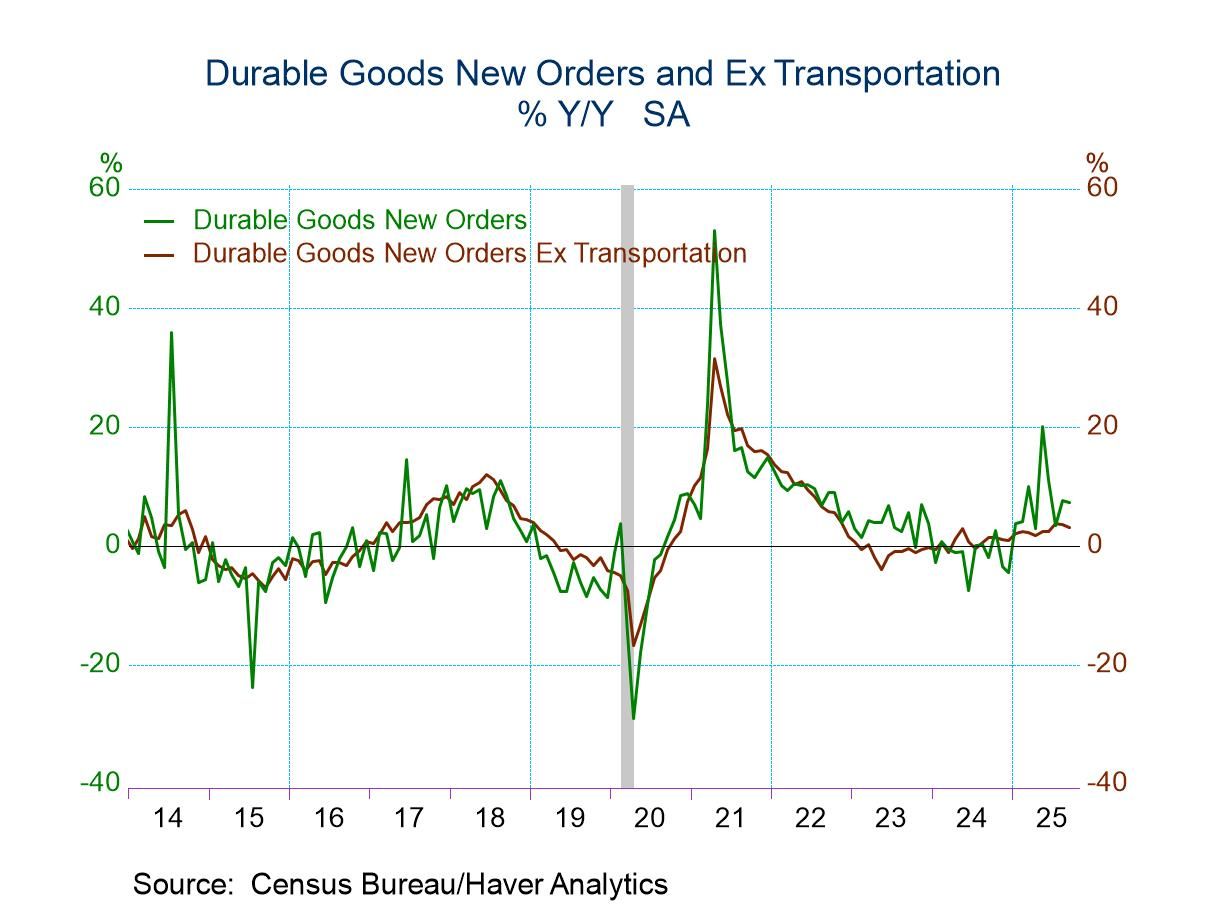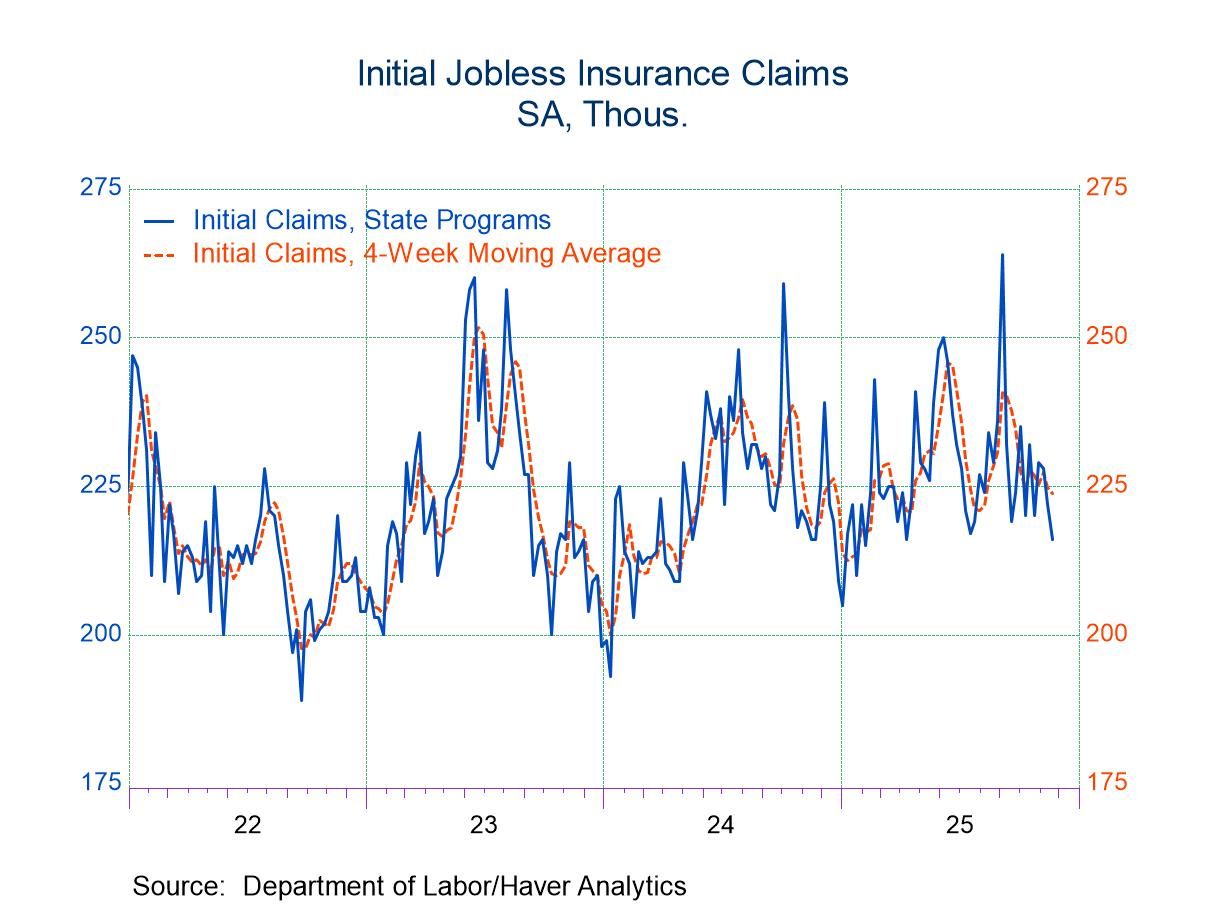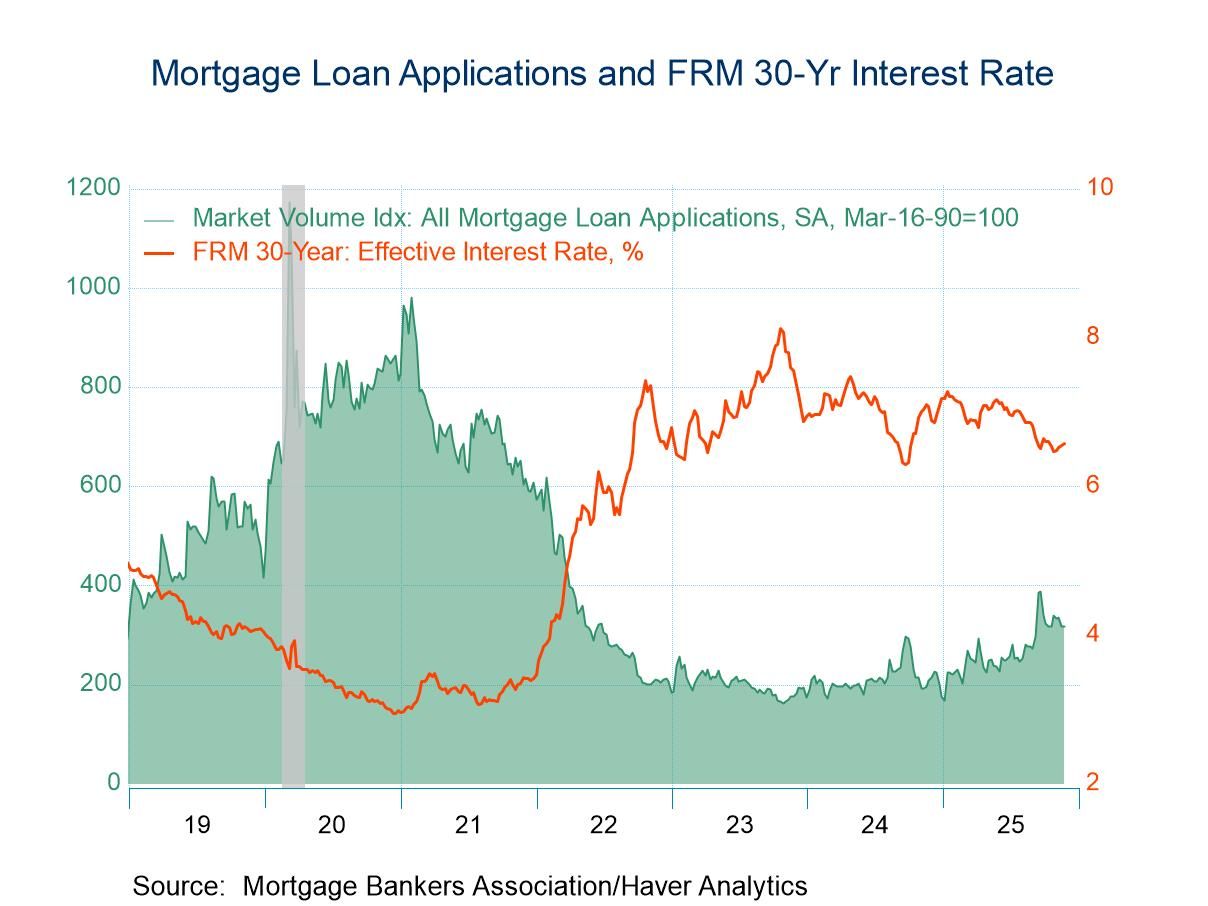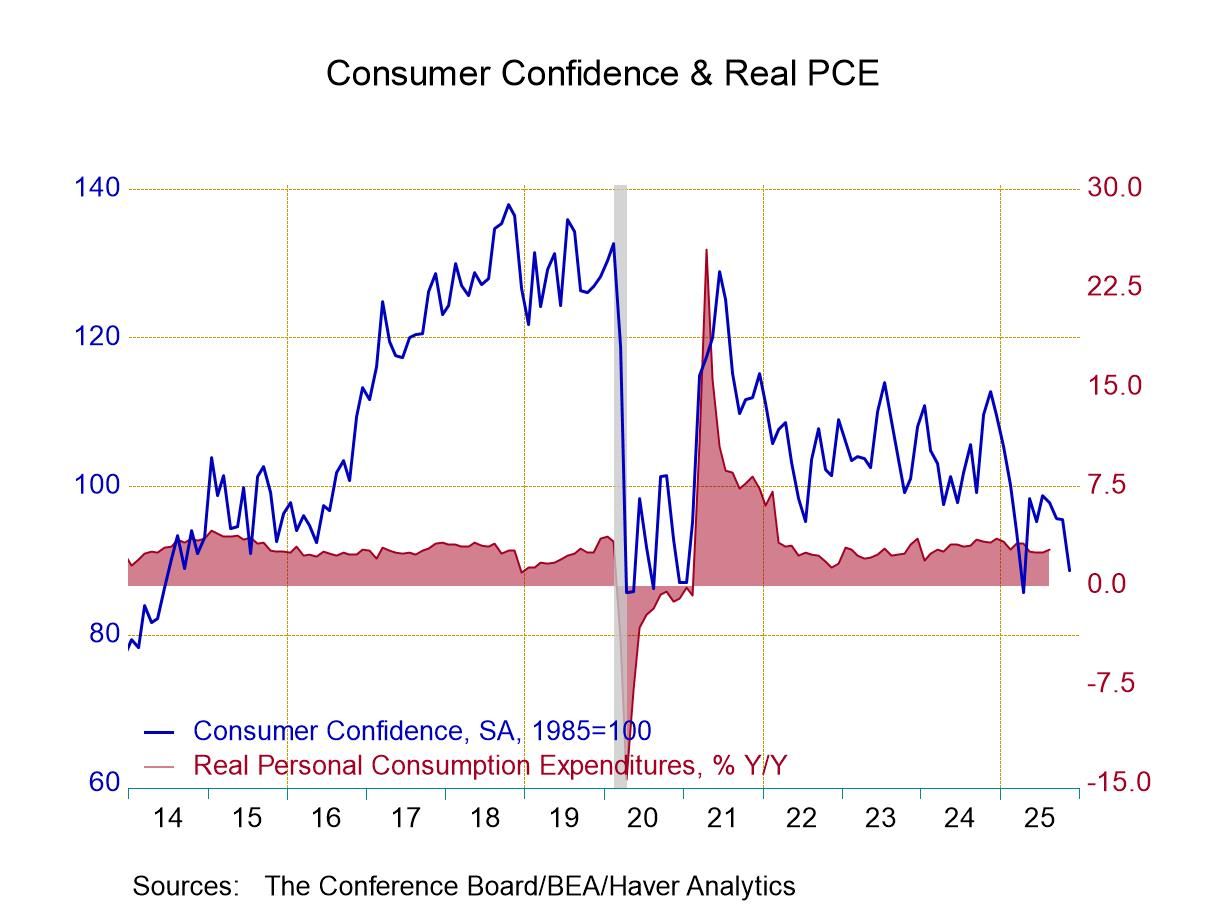 Global| Feb 17 2012
Global| Feb 17 2012U.S. CPI Picks Up
by:Tom Moeller
|in:Economy in Brief
Summary
Consumer prices rose during January at their quickest pace in four months. The CPI increased 0.2% after being unchanged in December. A 0.3% gain had been the Consensus expectation. Figures back to 2007 were revised due to new seasonal [...]
Consumer prices rose during January at their quickest pace in four months. The CPI increased 0.2% after being unchanged in December. A 0.3% gain had been the Consensus expectation. Figures back to 2007 were revised due to new seasonal factors. The faster rate of increase owed last month to an expected 0.2% rise in the total less food and energy. The increase lifted the gain versus last year to 2.3%, its quickest since 2008 and up from the 2010 full-year low of 1.0%.
Food & beverage prices rose 0.2% in January. The 12-month rise of 4.4% remained up sharply from 1.5% during 2010. Strength continued in prices of dairy products (9.0% y/y), meats (7.2% y/y) and cereal products (5.3% y/y). Energy prices rose 0.2% (6.1% y/y), the first increase in four months. Gasoline prices rose 0.9% (9.7% y/y) while fuel oil prices increased a not seasonally adjusted 1.2% (9.7% y/y). Gas & electricity prices fell 0.8% and ticked up just 0.4% y/y.
Quicker price gains for goods alone were behind the faster core inflation increase. They rose a moderate 0.2% last month. However, the 12-month increase of 2.2% was up from a 0.3% decline late in 2010. Apparel prices rose 0.9% (4.7% y/y) last month. Furniture & operations costs ticked up 0.1% and by 1.0% y/y after two years of decline. Motor vehicle prices fell 0.4%, down for the fifth straight month. The 2.6% 12-month rise was up from 0.8% in 2010.
Core service price increases also accelerated. They rose 0.2% last month for the ninth straight time but the y/y gain of 2.3% was up from 0.9% in 2010. Shelter costs (32% of the CPI) rose 0.2% (2.0% y/y). Owners equivalent rent of primary residences gained 0.2% (1.8% y/y). Education costs were strong and rose 0.3% (4.4% y/y) and medical care service prices increased 0.2% (3.7% y/y). Public transportation prices fell 0.8% (+1.7% y/y), down for the third straight month. Recreation services costs rose 1.1% m/m and by an accelerated 1.7% y/y.
The chained CPI, which adjusts for shifts in consumption patterns, rebounded 0.4% last month (2.7% y/y). Chained prices less food & energy rose 0.2% and by 2.1% y/y.
The consumer price data is available in Haver's USECON database while detailed figures can be found in CPIDATA. The expectations figure is the AS1REPNA database.
| Consumer Price Index (%) | Jan | Dec | Nov | Jan Y/Y | 2011 | 2010 | 2009 |
|---|---|---|---|---|---|---|---|
| Total | 0.2 | 0.0 | 0.1 | 2.9 | 3.1 | 1.6 | -0.3 |
| Total less Food & Energy | 0.2 | 0.1 | 0.2 | 2.3 | 1.7 | 1.0 | 1.7 |
| Goods less Food & Energy | 0.2 | -0.1 | 0.1 | 2.2 | 1.3 | 1.1 | 1.3 |
| Services less Energy | 0.2 | 0.2 | 0.2 | 2.3 | 1.8 | 0.9 | 1.9 |
| Food & Beverages | 0.2 | 0.2 | 0.1 | 4.2 | 3.6 | 0.8 | 1.9 |
| Energy | 0.2 | -1.3 | -0.5 | 6.1 | 15.2 | 9.6 | -18.2 |
| Chained CPI: Total (NSA) | 0.4 | -0.3 | -0.1 | 2.7 | 3.0 | 1.5 | -0.1 |
| Total less Food & Energy | 0.2 | -0.0 | 0.0 | 2.1 | 1.4 | 0.7 | 1.5 |
Tom Moeller
AuthorMore in Author Profile »Prior to joining Haver Analytics in 2000, Mr. Moeller worked as the Economist at Chancellor Capital Management from 1985 to 1999. There, he developed comprehensive economic forecasts and interpreted economic data for equity and fixed income portfolio managers. Also at Chancellor, Mr. Moeller worked as an equity analyst and was responsible for researching and rating companies in the economically sensitive automobile and housing industries for investment in Chancellor’s equity portfolio. Prior to joining Chancellor, Mr. Moeller was an Economist at Citibank from 1979 to 1984. He also analyzed pricing behavior in the metals industry for the Council on Wage and Price Stability in Washington, D.C. In 1999, Mr. Moeller received the award for most accurate forecast from the Forecasters' Club of New York. From 1990 to 1992 he was President of the New York Association for Business Economists. Mr. Moeller earned an M.B.A. in Finance from Fordham University, where he graduated in 1987. He holds a Bachelor of Arts in Economics from George Washington University.


